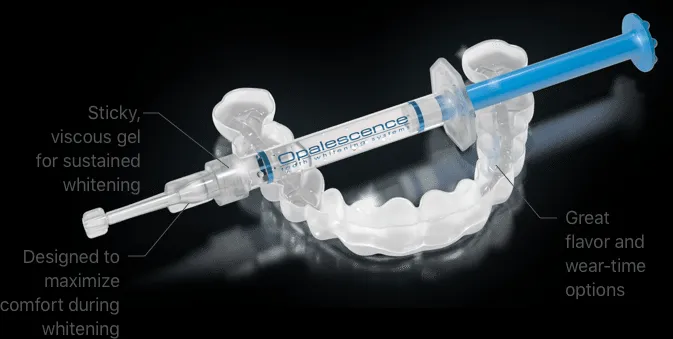What is Opalescence Teeth Whitening
Opalescence is a professional teeth whitening system designed to brighten your smile. It’s a widely recognized brand in the dental industry, known for its effective and versatile whitening products. Unlike over-the-counter options, Opalescence provides a range of professional-strength products, often prescribed and monitored by a dentist. This professional approach ensures both effective whitening and a safer experience, minimizing the risks of sensitivity and other potential side effects. The core of Opalescence’s effectiveness lies in its active whitening agents, which penetrate the enamel to break down stains and discoloration. The products are available in various concentrations and formulations, catering to individual needs and preferences. Opalescence is a popular choice for those seeking a significant improvement in their smile’s appearance, offering a pathway to a more confident and radiant look.
Types of Opalescence Whitening Products
Opalescence offers a variety of products to cater to different preferences and needs. These include whitening gels, toothpastes, and pre-filled trays, all designed to deliver effective results. Each product type is formulated with different concentrations of whitening agents, allowing dentists to customize the treatment plan based on the patient’s specific situation. Understanding the options available is crucial for making an informed decision. The choice of product often depends on factors such as the severity of the staining, the patient’s sensitivity levels, and their lifestyle. Consulting with a dental professional is essential to determine the most appropriate Opalescence product for achieving the desired whitening outcomes. Each product is designed for specific application methods, ensuring convenience and ease of use.
Opalescence Whitening Gels
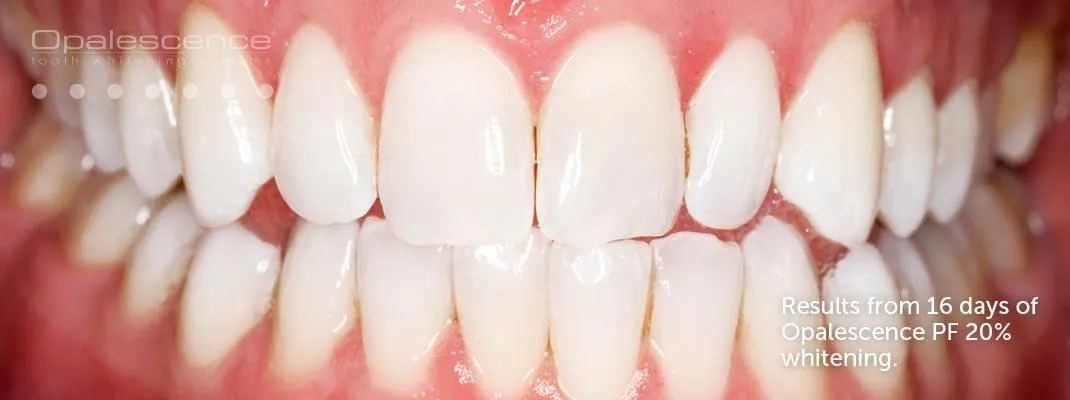
Opalescence whitening gels are a cornerstone of the brand’s offerings, typically available in various concentrations to suit individual needs. They are designed to be used with custom-fitted trays, ensuring even application and maximum contact with the teeth. The gels contain active ingredients that penetrate the enamel, breaking down stains and discoloration. The application process is straightforward, usually involving applying a small amount of gel to the trays and wearing them for a specified period, as recommended by your dentist. This method allows for targeted whitening, providing noticeable results within a relatively short timeframe. The efficacy of Opalescence gels is often praised, delivering significant improvements in tooth whiteness. The dentist can monitor the progress, adjusting the concentration or duration of use to manage sensitivity and optimize the whitening outcome. These gels are ideal for in-office or at-home whitening, depending on the specific product and dental plan.
Opalescence Whitening Toothpaste
Opalescence also offers whitening toothpastes, which serve as a convenient option for maintaining and enhancing the results of professional whitening treatments. These toothpastes contain ingredients designed to remove surface stains and prevent new ones from forming. They are often used in conjunction with other whitening methods, such as gels or trays, to extend the longevity of the results. Regular use of Opalescence whitening toothpaste helps to keep teeth looking bright and clean. The toothpaste’s formulation often includes fluoride, which strengthens enamel and protects against cavities. This combination of whitening and oral health benefits makes it a practical addition to any daily dental routine. Unlike whitening gels, toothpaste provides a gentler approach, suitable for daily use and maintenance.
Opalescence Whitening Trays
Opalescence whitening trays are an essential part of the at-home whitening process, typically used with whitening gels. These trays are often custom-made by a dentist to perfectly fit the patient’s teeth, ensuring optimal contact between the whitening gel and the tooth surface. The trays are designed to hold the whitening gel in place, preventing it from being washed away by saliva and ensuring even application. Custom-fitted trays are more effective and comfortable than generic alternatives. This is because they are made to the exact contours of the patient’s teeth. The use of trays allows for controlled and consistent whitening, delivering visible results in a relatively short period. They are an integral part of the Opalescence whitening system, making the process both effective and user-friendly. The trays are typically worn for a specific duration each day or night, as directed by the dentist.
Factors Influencing Whitening Duration

The time it takes to achieve the desired whitening results with Opalescence varies from person to person. Several factors play a significant role in determining the duration of the treatment. These factors include the severity of the tooth staining, individual tooth sensitivity, and the consistency with which the product is used. Understanding these elements is crucial for setting realistic expectations and optimizing the whitening experience. The dentist will assess these factors during the initial consultation, developing a customized treatment plan that addresses the patient’s specific needs. The duration of treatment is typically determined by the concentration of the whitening agent, the frequency of use, and the overall health of the teeth. Proper adherence to the dentist’s instructions is essential for achieving the best results.
Severity of Staining
The degree of tooth staining is a primary factor influencing the duration of Opalescence whitening. Teeth with more significant discoloration or stubborn stains may require a longer treatment period. The type of staining also plays a role. Surface stains from coffee, tea, or smoking typically respond more quickly to whitening treatments than intrinsic stains, which originate from within the tooth. Severely stained teeth often require multiple sessions or a higher concentration of whitening agents to achieve the desired results. The dentist will assess the severity of the staining during the initial examination, providing an estimated timeline for the whitening process. The treatment plan will be adjusted based on how the teeth respond to the treatment. Patients with more significant staining should be prepared for a more extended whitening journey.
Tooth Sensitivity
Tooth sensitivity is another factor that can affect the duration and frequency of Opalescence whitening. Some individuals experience increased sensitivity during the whitening process, making it necessary to adjust the treatment plan. The dentist may recommend reducing the concentration of the whitening agent or decreasing the frequency of use. Patients with sensitive teeth might benefit from using a toothpaste designed to reduce sensitivity before and during the whitening treatment. Proper management of sensitivity ensures that the patient remains comfortable throughout the process. The dentist will closely monitor the patient’s sensitivity levels, making adjustments to the treatment as needed. In some cases, desensitizing agents may be prescribed to alleviate discomfort. The overall goal is to find a balance between achieving the desired whitening results and minimizing any discomfort.
Consistency of Use
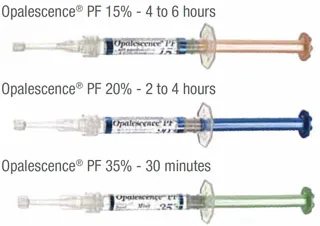
The consistency with which Opalescence products are used directly impacts the whitening duration. Adhering to the dentist’s instructions, including the recommended application frequency and duration, is crucial for optimal results. Missing applications or using the product inconsistently can prolong the treatment period and reduce effectiveness. Patients should incorporate the whitening process into their daily routine, ensuring regular use. The dentist will provide a detailed treatment plan, outlining the appropriate usage guidelines. Following these guidelines will maximize the effectiveness of the whitening process. Maintaining a consistent approach is essential for achieving the desired level of tooth whiteness. Consistent use also helps to ensure that the results are more predictable and lasting.
The Opalescence Whitening Timeline
The timeline for Opalescence whitening varies depending on the specific product used and the individual’s unique circumstances. However, a general timeline can be established to provide patients with an understanding of the process. The timeline typically includes an initial consultation, the whitening process itself, and maintenance and aftercare. Each phase plays an essential role in achieving the desired results and maintaining a bright smile. Understanding this timeline helps patients set realistic expectations and allows them to plan their treatment accordingly. Proper adherence to the dentist’s instructions at each stage is vital for a successful outcome.
Initial Consultation and Assessment
The initial consultation and assessment are the first steps in the Opalescence whitening process. During this appointment, the dentist will evaluate the patient’s oral health, assess the degree and type of tooth staining, and discuss the patient’s expectations. This assessment helps the dentist determine the most suitable whitening product and create a customized treatment plan. The dentist will also check for any existing dental issues, such as cavities or gum disease, which might affect the whitening process. The initial consultation includes taking impressions for custom-fitted trays, if needed. The dentist will also provide instructions on how to use the product and answer any questions the patient may have. The consultation sets the stage for a successful and safe whitening experience.
The Whitening Process
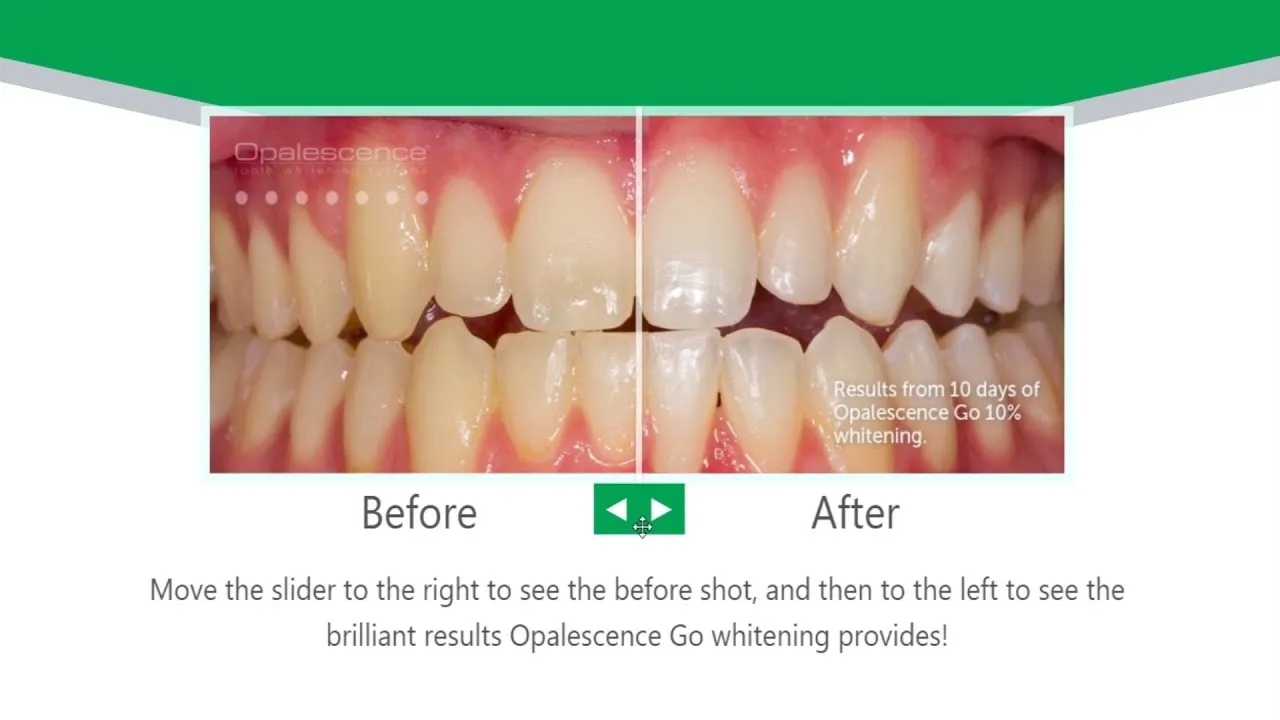
The whitening process itself typically involves using Opalescence products as directed by the dentist. This might include applying whitening gel to custom trays and wearing them for a specific duration each day or night, or using Opalescence whitening toothpaste regularly. The duration of the whitening process depends on several factors, including the product used, the concentration of the whitening agent, and the individual’s response. Patients should follow their dentist’s instructions carefully. The dentist may schedule follow-up appointments to monitor the progress and make any necessary adjustments to the treatment plan. The whitening process usually takes a few weeks to achieve the desired results, although some patients may see improvements sooner. Patience and consistency are essential throughout this phase to achieve the best outcome.
Maintenance and Aftercare
Maintenance and aftercare are crucial for maintaining the results of Opalescence whitening. This involves following the dentist’s recommendations, which may include using Opalescence whitening toothpaste, avoiding staining foods and drinks, and attending regular dental checkups. After the initial whitening treatment, occasional touch-up treatments may be recommended to maintain the brightness of the teeth. Regular dental checkups allow the dentist to monitor the overall oral health and address any potential issues promptly. Proper oral hygiene, including brushing and flossing, is essential for maintaining a healthy and bright smile. Avoiding smoking and limiting the consumption of staining substances such as coffee, tea, and red wine also helps to prolong the whitening effects. The goal of maintenance is to keep the teeth looking their best for as long as possible.
Maximizing Whitening Results with Opalescence
To achieve and maintain the best results with Opalescence whitening, certain steps should be followed. These include adhering to the dentist’s instructions, avoiding foods and drinks that can stain teeth, and attending regular dental checkups. Maximizing the whitening results requires a proactive approach, combining proper treatment with good oral hygiene habits. Understanding these key strategies is critical for getting the most out of the Opalescence whitening experience. This proactive approach will ensure that you can enjoy a brighter and more confident smile for an extended period.
Following Instructions
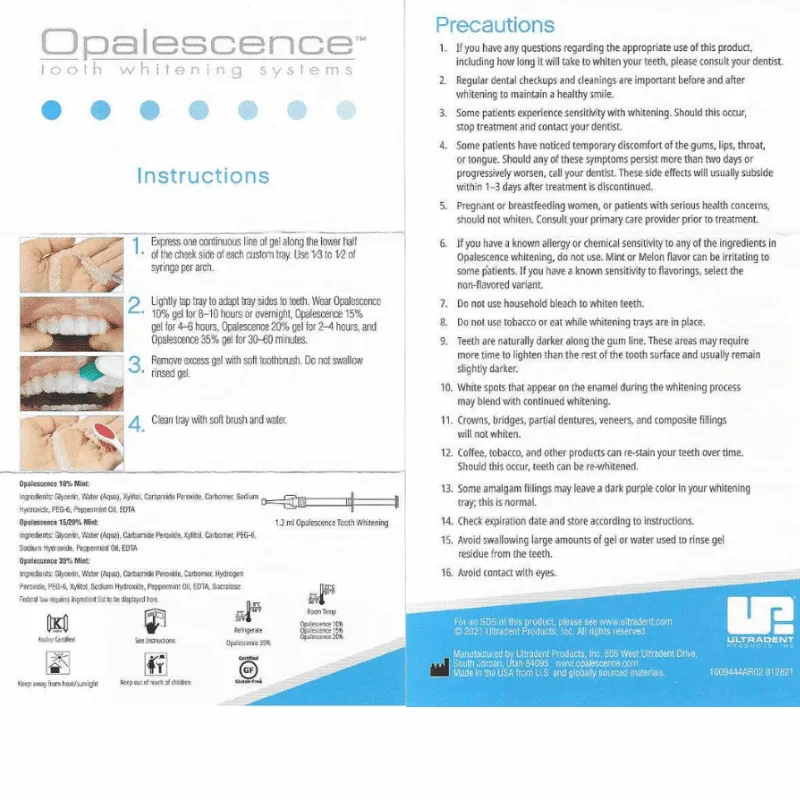
Following the dentist’s instructions is the most crucial aspect of maximizing Opalescence whitening results. The dentist will provide detailed guidelines on how to use the product, including the frequency and duration of application. Adhering to these instructions ensures that the whitening agent is used effectively. Skipping applications or deviating from the prescribed usage can reduce the effectiveness of the treatment and extend the required duration. Patients should always consult their dentist if they have any questions or concerns about the instructions. Consistency is key to achieving the best possible outcome. Proper compliance with the dentist’s instructions not only enhances the whitening effects but also minimizes the risk of potential side effects.
Avoiding Staining Foods and Drinks
Avoiding staining foods and drinks is essential for preserving the results of Opalescence whitening. Certain foods and beverages contain pigments that can stain the teeth, leading to a loss of whiteness. Common culprits include coffee, tea, red wine, and dark-colored berries. Limiting the consumption of these substances or consuming them in moderation can help maintain a brighter smile. After consuming these items, rinsing the mouth with water or brushing the teeth can help reduce staining. Avoiding smoking is also crucial, as nicotine and tar can cause significant discoloration. Patients should be mindful of their diet and lifestyle choices to protect their investment in whitening.
Regular Dental Checkups
Regular dental checkups play an important role in maintaining the results of Opalescence whitening and ensuring overall oral health. During these visits, the dentist can assess the teeth for any new stains, clean the teeth thoroughly, and provide recommendations for maintaining a bright smile. Professional cleanings remove surface stains that may have accumulated, keeping the teeth looking their best. The dentist may also provide touch-up treatments to maintain the whiteness. Regular checkups also help to detect and address any potential dental issues early on, preventing them from affecting the appearance of the teeth. Maintaining a good relationship with the dentist is essential for long-term oral health and a beautiful smile.
Potential Side Effects and Solutions
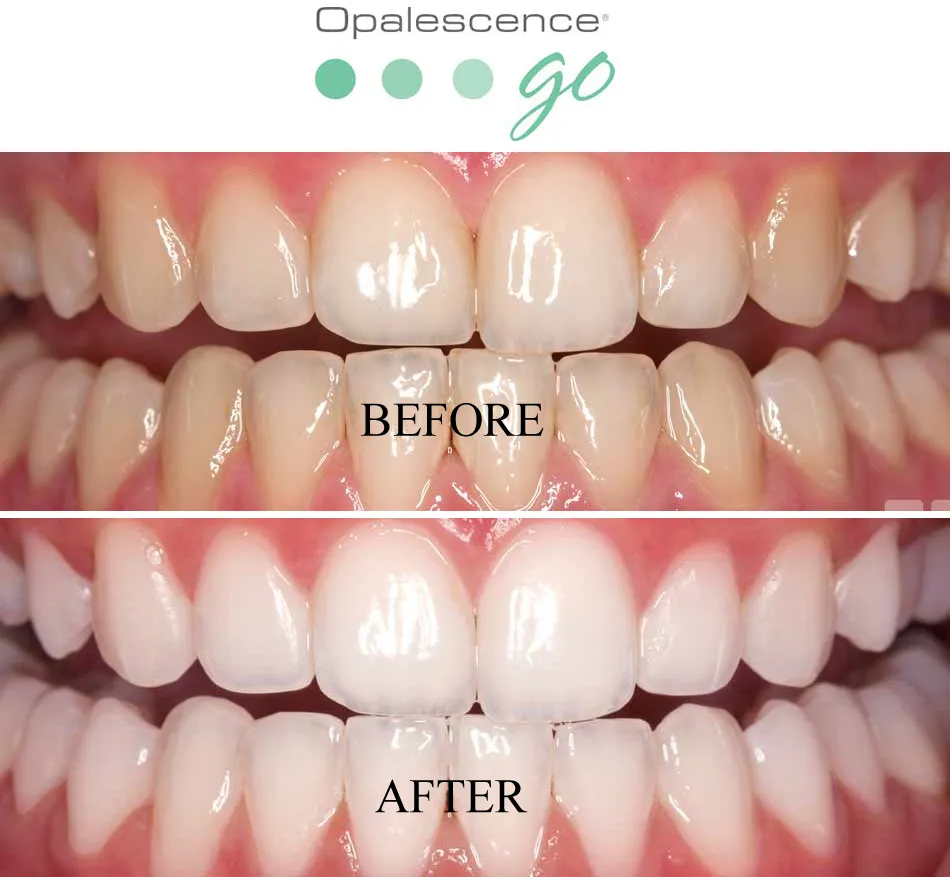
While Opalescence whitening is generally safe, some potential side effects may occur. These side effects are usually mild and temporary, but it’s important to be aware of them and know how to address them. The most common side effects are tooth sensitivity and gum irritation. Understanding these potential issues can help patients manage their experience effectively. The dentist can provide guidance on mitigating side effects and ensuring a comfortable whitening process. The goal is to achieve the desired whitening results with minimal discomfort.
Tooth Sensitivity
Tooth sensitivity is a common side effect of teeth whitening, including Opalescence treatments. The whitening agents can penetrate the enamel, causing temporary sensitivity. This sensitivity can range from mild discomfort to more noticeable pain. The dentist may recommend using a desensitizing toothpaste before, during, and after the whitening process. The dentist might also adjust the treatment plan, such as reducing the concentration of the whitening agent or shortening the duration of each application. In most cases, tooth sensitivity subsides within a few days after the treatment is completed. Avoiding very hot or cold foods and drinks can also help to minimize discomfort during the whitening process. Patients should inform their dentist if they experience significant sensitivity.
Gum Irritation
Gum irritation is another potential side effect of Opalescence whitening, though it’s less common than tooth sensitivity. If the whitening gel comes into contact with the gums, it can cause irritation, redness, or soreness. This is usually due to improper tray fit or excessive gel use. The dentist will ensure that custom trays fit properly to minimize any contact with the gums. Patients should apply the gel carefully, following the instructions provided. If gum irritation occurs, rinsing the mouth with water and avoiding further use of the whitening product for a short period can often help. The dentist may also recommend using a desensitizing gel to soothe the gums. In most cases, gum irritation resolves quickly after the whitening process is completed. Proper application and tray fit are essential to prevent irritation.
Frequently Asked Questions
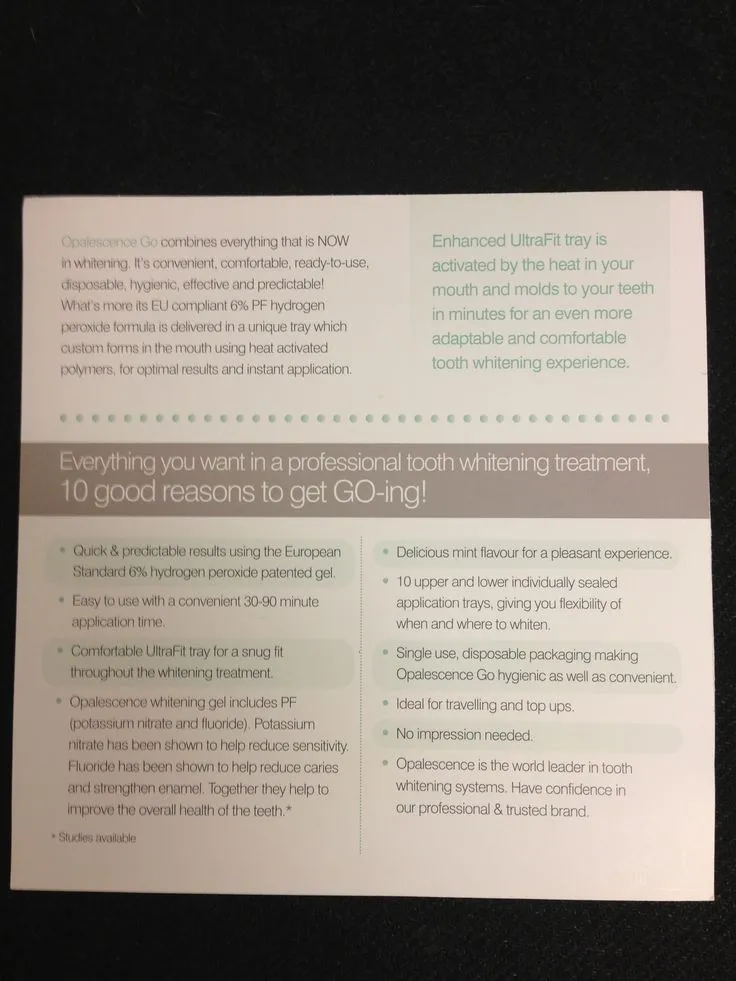
Several common questions arise regarding Opalescence whitening. Addressing these frequently asked questions can help patients understand the process better and make informed decisions. These FAQs cover the frequency of use, the time it takes to see results, and the safety of the product. Answering these questions provides clarity and helps patients manage their expectations. Consulting with a dentist is essential for personalized advice, but understanding these FAQs can provide a general overview of the whitening experience.
How often should I use Opalescence
The frequency of Opalescence use depends on the product being used and the specific instructions provided by your dentist. With at-home treatments, it might involve using the whitening gel for a specified time each day or night. With in-office treatments, the dentist will apply the product during scheduled appointments. Always follow your dentist’s recommendations, as they are tailored to your individual needs and oral health. The dentist will provide a clear plan outlining the frequency of use. Adhering to these instructions ensures the treatment’s effectiveness and minimizes potential side effects. Typically, the frequency will be consistent throughout the whitening process, allowing for the desired results.
How long does it take to see results
The time it takes to see results with Opalescence varies, but many patients begin to notice improvements within a few days to a few weeks. The speed of the whitening process depends on factors such as the product strength, the severity of the staining, and the consistency of use. The dentist will provide an estimated timeline during the initial consultation. Some individuals may see significant changes in a shorter time frame. However, patience is key, as the full results typically become visible after a few weeks of consistent treatment. Follow-up appointments allow the dentist to monitor progress and make adjustments if needed. Regular use of the whitening products is essential for achieving the best results within a reasonable timeframe.
Is Opalescence safe for sensitive teeth
Opalescence is designed to be safe, even for people with sensitive teeth, although some temporary sensitivity is possible. The dentist can recommend specific products and concentrations to minimize the likelihood of sensitivity. Tooth sensitivity is a common, temporary side effect. Using a desensitizing toothpaste before, during, and after the whitening treatment can help mitigate any discomfort. The dentist might also adjust the treatment plan to reduce the concentration or frequency of use. It is essential to communicate any sensitivity to your dentist, who can guide you through the process. With proper precautions and monitoring, Opalescence can be a safe and effective option for individuals with sensitive teeth. The goal is to provide a comfortable whitening experience while achieving the desired results.
